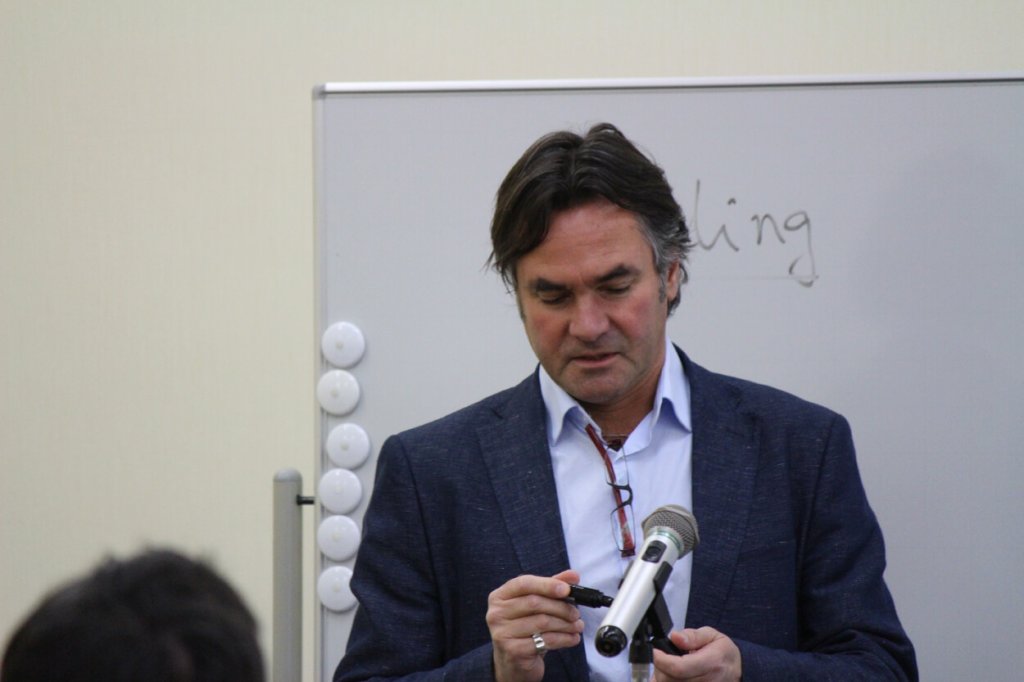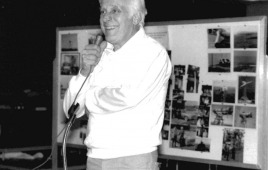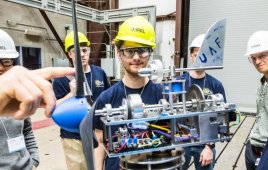
Hangan received a CDN$30 million grant by Canadian federal and provincial funding agencies to design and build the WindEEE Dome to study the impact of all types of wind systems in a controlled environment.
At a lecture a few years back at Ontario’s Western University, Professor in the Faculty of Engineering, Dr. Horia Hangan, discussed the challenges of measuring wind. “Wind is invisible and so we have to make it visible in some way,” he said.
He then displayed a graph with a single line that zigzagged up and down to demonstrate the variability of wind. “The engineer’s way of looking at the wind, and making it visible, is as a time series. We look at the variation of the velocity as a function over time,” he explained. “But engineers are often accused of not having imagination.”
One look at the world’s first 3D, hexagonal wind-measurement dome, located about 25 minutes away from Western University’s campus, and engineers might earn a new reputation. Along with his work as a Professor, Hangan is also Founding Director of the Wind Engineering, Energy, and Environment (WindEEE) Research Institute, an organization with a vision “to be a global leader in wind research and innovation.”
In 2009, Hangan received a CDN$30 million grant by Canadian federal and provincial funding agencies to design and build the WindEEE Dome. WindEEE is intended to reproduce and study the impact of any and all types of wind systems in a controlled environment. The 25-meter diameter inner dome (40-m diameter for the outer return dome) lets researchers simulate wind conditions over extended areas and in complex terrain on a large scale.
By manipulating the outflow and direction of over 100 powerful fans mounted on the dome’s ceiling, the facility can produce time-dependent, straight, sheared, or swirl winds of variable directionality. Hangan likes to refer to it as “the tornado-generating wind dome.”
Hangan received an Engineering Degree in Aeronautics from the Polytechnic University of Bucharest, Romania back in 1985, and continued his graduate studies at Ecole Polytechnique Federale de Lausanne in Switzerland before obtaining his Ph.D. in Wind Engineering at the Western’s Boundary Layer Wind Tunnel Laboratory in 1996. After post-doctoral studies at Universite de Poitiers in France he rejoined Western in 1997 as a faculty member with the Boundary Layer Wind Tunnel Laboratory and the Department of Civil and Environmental Engineering.
Hangan has also authored more than 200 journal and conference publications, and is part of the Editorial Board of several international journals including ASME Journal of Fluids Engineering, ASME Journal of Solar and Wind Energy, the Journal of Wind Engineering and Industrial Aerodynamics, and others.
Despite his work in establishing a 3D wind dome, Hangan always intended WindEEE to act as more than just a wind measurement facility. He envisioned a network that serves the wind industry and academia on a national scale. Before the facility had finished construction in 2013, the Wind Energy Strategic Network of Canada (WESNet) declared it a national research network facility. WESNet is the first wind-related network in Canada. It’s comprised of 39 Canadian researchers from 16 universities that work in close collaboration with industry, wind institutes, and governments.
As per WindEEE website, “The Institute acts as an enabler of industry-academic partnership in wind-related research in which commercial funding is matched with academic research funds to multiply the initial investment.”
“WindEEE is to serve as the physical facility for a network that entails most everything done in wind-energy research,” said Hangan, whose goal from the beginning of this project was to connect industry to research and education. “This is a huge investment for Canada, but we’re opening it to the world. We want to make this an international wind facility.”
Now who said engineers don’t have imagination?
Filed Under: Innovators & influencers




